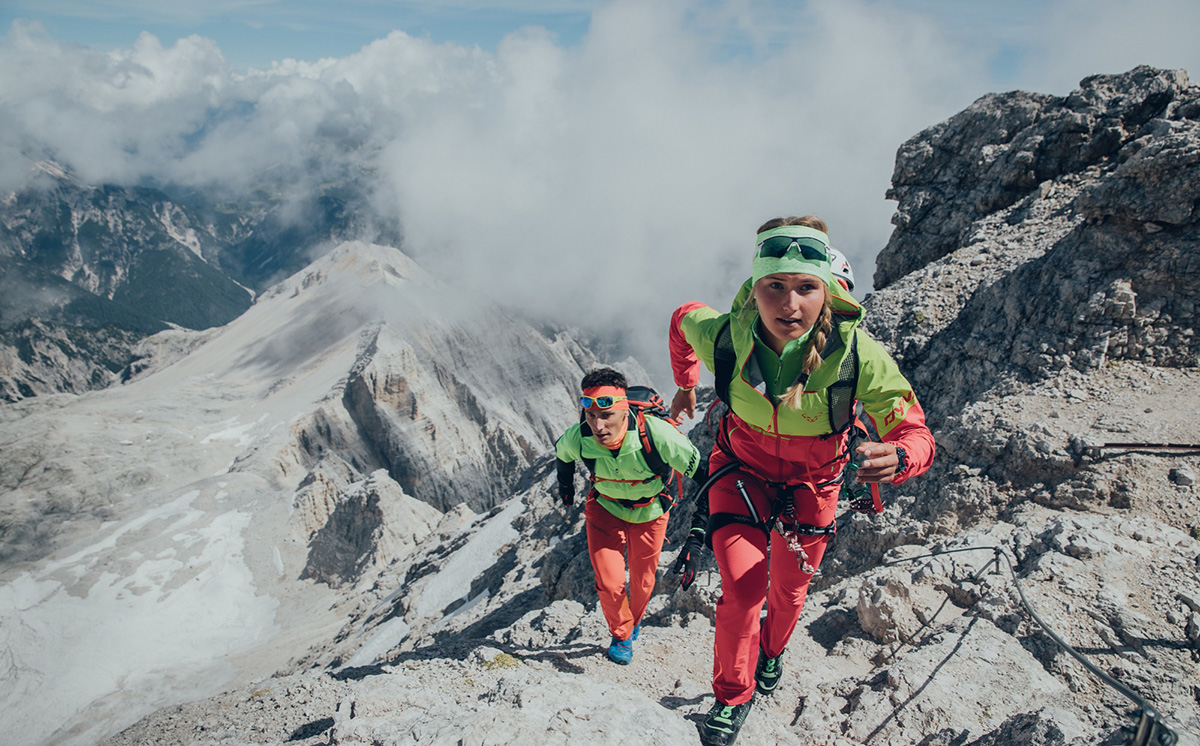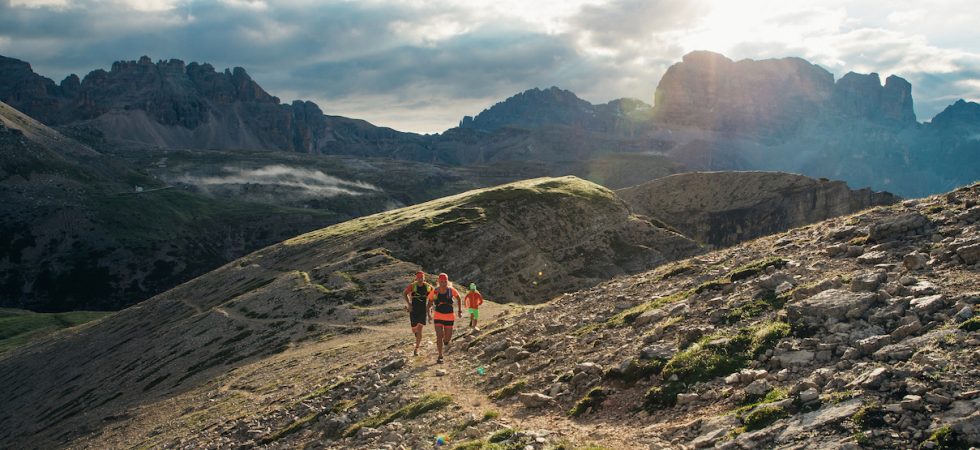The equipment in any branch of sport is playing an important role for an athlete. To win a race, a car driver needs to have a reliable and fast car. The same kind of thinking can be transmitted to trail running. Of course, having the lightest and most comfortable equipment does not necessarily mean, that you are going to win or to run faster than before. However, it certainly helps to make your trail running experience much easier and less stressful.
Therefore, you will find all necessary information on the following topics in this blog post:
In general, running is considered to be a sport which does not really require much equipment. Basically, the only thing you need is some shorts, a t-shirt and, of course, running shoes and you are ready to go. Well, this perception is slowly changing especially in trail running. It is not surprising that the need for extra equipment is a lot higher when you run in the mountains, compared to running on roads or in the city park.
Mountain and trail runners must feel secure under any possible conditions because you never know when the weather changes. In addition, the possibility of falling and getting injured is much higher; therefore, you simply must be confident about the things you are taking with you on training, a running tour or a race. For races, there are also strict equipment requirements which must be kept in order to be able to participate. As many of you, I am also trail runner and every time I am reading the requirements for gear, I am asking myself why I need so much stuff for a 20km or a marathon race, which I can finish in a reasonable time.
Organizers Requirements and terms
Well, the reason is simple: Organizers are taking responsibility for runners, who are taking part in their race and none of them wants any runner to get injured. If I imagine, I would organize such a race, I would also want all participants to feel safe and advice them to bring all the necessary equipment. This need for equipment is supported by the fact, that some people have already died during races. When the weather changes and people do not have enough clothing, nutrition and necessary training, they can suffer from hypothermia. After thinking about it, I am not surprised at all, that many organizers are strict about equipment rules.
The equipment requirements can vary depending on the distance runners cover either in a race or just in a training run. Moreover, the requirements are of course also different whether you participate in a 60 or 100 km ultra run or in a 20km Sky Race. For races shorter than 20km, such as VK or 10km races, most of the organizers do not require anything. Still, it is advisable to take at least a bit of water with you – even for a short 1-2 hour training run. To find out more about the different distances in trail running visit our trail running guide.
Based on the requirement lists of the biggest races in Europe, we have put together an overview of which equipment you need for middle and long distance races. This overview can also serve as good advice for runners who are planning longer training runs or tours in the mountains. There are two categories you should pay attention to: The first one is clothing and shoes; the second one shows all the additional gear you will need. For Ultra distances, some organizers also recommend taking some gear which is not required but could help.
Equipment for Middle distances
Here you will find the equipment lists for shorter races or trips which usually start at 20km or 2 hours up to marathon distance. The race lists can vary from race to race; therefore, you should still check the equipment requirements for each event.
Running shoes and clothes:
- Trail running shoes
- Jacket – windproof, but mostly waterproof
- Long pants
- Long sleeved shirt
- Hat/Headband
- Gloves
- Backpack or Running Vest
Additionally gear:
- Drinking cup
- Water container – either 0,5 or 1L
- Whistle
- Identification Card
- First Aid Kit – not in every race
- Mobile phone
- Course map
- Rescue Blanket

Equipment for long distances
The following list provides you with an overview of what to bring for ultra races, which are longer than a marathon and therefore require more equipment than a half day or whole day running trip. Most of the equipment is similar to shorter distance requirements but still, there are some additional pieces of clothing and equipment. In addition, there are some pieces of equipment which are not required but recommended by organizers.
Running shoes and clothes:
- Trail running shoes
- Backpack/running vest
- Jacket – windproof, but mostly waterproof
- Long pants – sometimes waterproof
- Long sleeved shirt
- Hat/headband
- Spare hat/headband
- Gloves
Additional gear:
- Headlamp – with second batteries
- Water containers – mostly for 1 or 1,5L
- Some nutrition: bars or gels
- Drinking cup
- Whistle
- Map
- First Aid kit
- Rescue blanket
- Mobile phone
- Identification Card
- Snow spikes – in some cases
Recommended gear:
- Poles
- Suncream
- Sunglasses
- Anti-chafing cream
- Spare food
Are you interested in other related articles about trail running? We have some more for you:
→ Trailrunning: The True Freedom of Running
→ The ABC Of Trail Running Shoes: All You Need To Know
Photos: © Dynafit





